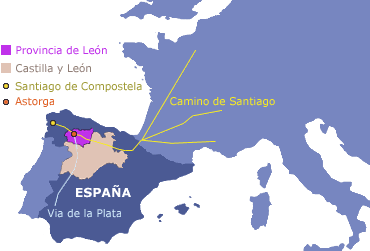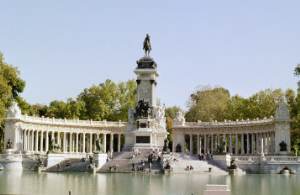Astorga is a small city in the middle of nowhere, northwest of Spain.

The "
Camino de Santiago" is the Way of St James; the "
Vía de la Plata" is a roman paved road between two of the most important roman settlements in Hispania: Asturica Augusta (Astorga) and Emerita Augusta (Merida). Both ways meet in Astorga, and both are used nowadays as pilgrimage routes.
But it is Astorga that we were talking about. Founded by the Roman emperor
Augustus on the fourteenth year BC, most of its Roman ruins are reasonably well-conserved, its sewers said to be the best in Europe (and some of them still in use). The Middle Ages left nothing in Astorga but desolation (the city was destroyed and rebuilt several times prior to and after the Reconquest). In the XVIIIth century Napoleon Bonaparte himself directed his troops against Astorga, destroying almost everything but the Cathedral. In the XIXth century, Gaudi (maybe the best Spanish architect ever) built the Episcopal Palace, and the XXth century saw Astorga decay and become just another small city somewhere in
Spain. Its four museums, its historic relevance and its remarkable monuments and ruins manage for Astorga still to be remembered (and visited).
-
Astur Plaza Hotel (Astorga)
-
Astorga's City Council -
Cafe Pop Art (Astorga)
-
Astorga images (courtesy of
Google).






